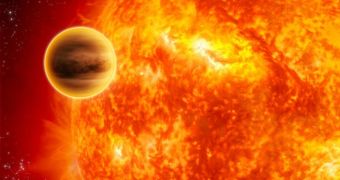After the success achieved in the last years in the collaboration with NASA's Ames Research Center, which included the mapping of stars and that of the surfaces of different bodies in the solar system, the Internet search giant Google is now showing interest in expanding its development towards providing other useful information such as maps of exo-planets. The Transiting Exoplanet Survery Satellite with its wide-field digital cameras will have the role of studying near bright stars, in the hope to find new exo-planets.
When it will be completed and launched into space in 2012, Google is expected to help process the massive amount of data generated by the satellite. MIT Kavli Institute for Astrophysics and Space Research project leader, George R. Ricker, says that: "Decades, or even centuries after the TESS survery is completed, the new planetary systems it discovers will continue to be studied because they are both nerby and bright." Some of these new exo-planets we are discovering today, or which will be discovered in the near future, could one day become the new home to human colonists departing our solar system.
Exo-planet detection
To date, there are more than 270 exo-planet discovered in our galaxy, however most of these are either gas giants or rocky planets uninhabitable for life as we know it. Nonetheless, these are the most likely targets for the discovery of living organisms other than those that originated on Earth.
The usual detection technique, the method through which the first planet was found more than a decade ago, involves studying the wobble of the mother star as planets orbiting around it exert their gravitational pull. The big disadvantage of this method is that in order for the wobble to be noticeable, the gravitational pull must be considerable, meaning most of the time gas giants are discovered.
TESS on the other hand will have the capability of measuring slight variations in the light emitted from the star, as the planet passes in front of it from our perspective. The technique is not exactly new, in fact more than 20 exo-planets have been found this way, and disables the selective process imposed by mass as in the case of the method using stellar wobble.
Further still, transit-detection provides more information than the mere discovery. Spectroscopic measurements can estimate the planet's size, whether it has an atmosphere, and what kind of chemicals are present in the respective atmosphere and the ratio. From our past experience with solar system exploration, we would immediately know whether or not the newly discovered planet is habitable or whether life has appeared on it.
The presence of water and oxygen are only two of the sigs relevant in the search for new life throughout the universe. According to Ricker, TESS will be equipped with six high-resolution wide-field cameras, with a total resolution of 192 megapixel that will cover the whole sky. By the end of the survey, TESS will have allegedly studied more than two million stars, and found at least a thousand new planetary systems. Probabilistic calculations reveal than in fact there could be 10 times as much planetary systems found in its two-year mission.
The search for dark matter
Information collected by the satellite will be relayed back to Earth once every three months, to be studied in detail, not only for the presence of new exo-planets, but also to observe gamma-ray bursts and supernova explosions. Similar digital cameras will be used in order to build a ground-based observatory to search for the presence of dark matter, which is thought to make up more than 75 percent of the mass of the universe.
Although dark matter is invisible, its abundance will eventually reveal dark matter particles hitting the Earth. Similar to the current neutrino detectors, these elusive particles could be put in evidence by detectors using some kind of liquid - heavy water in the case of neutrinos - that produces flashes of light when it interacts with them.

 14 DAY TRIAL //
14 DAY TRIAL //